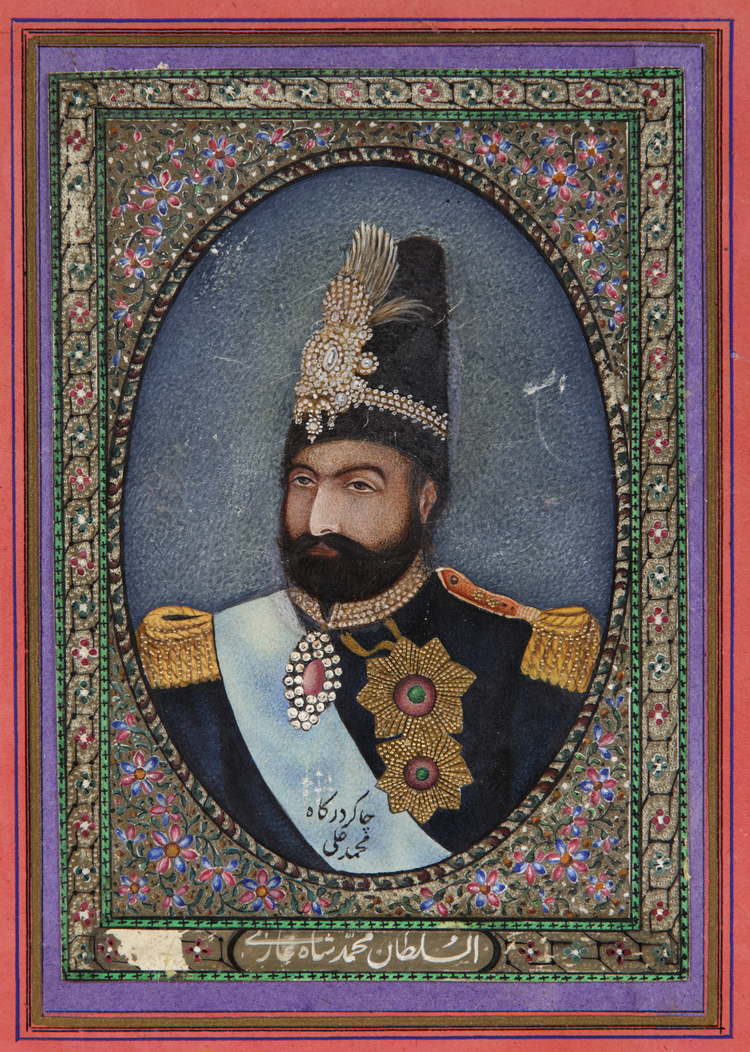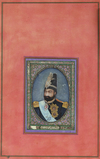A PORTRAIT OF MOHAMMAD SHAH QAJAR, SIGNED BY MUHAMMAD ALI, CIRCA 1840
Gouache pigments heightened with gold on paper, depicting a roundel enclosing a half portrait of Mohammad Shah, with rounded and full face, long mustache attached to a short beard, wearing a luxurious military unifom of blue silk and decorated at the collar and on the shoulders, with two diamond-encrusted insignia pinned to his breast, the shah wears a royal blue scarf with a long black hat decorated with precious ornaments. Further stylized onwith red and blue floral scrolls on gilt ground, all ruled in gold and polychrome borders. Miniature: 14 by 10 cm. Folio: 31.5 by 21 cm.
CATALOGUE NOTE Mohammad Shah (r.1834-1848) was the second shah of the Qajar dynasty. He was chosen by his grandfather Fat’h Ali Shah to be his his heir afther the death of his father Abbas Mirza. MohammAd was known to be somewhat sickly through t his life and he finally died at the age of 40 of gout in Mohammadieh Palace. Persian art was influenced to a large extent by the European culture and art during the Qajar period. The art of self-portrait during the Qajar reign rulers was confined to the royal court, due to Qajar’s rulers opining to the west, where artists of this age showed an increasing desire to accommodate the European arts to adapt the requirements of new beauty, where rulers took the portrait to confirm their new position and expressing their power and influence, both inside and outside the court, as well as being used as a tool with political objectives. Most of Qajar royal self-portraits were a reflection of Qajar’s society, their joys of life, in particular, their richness. The royal Qajar painters used over- adornment style in painting self-portrait.


